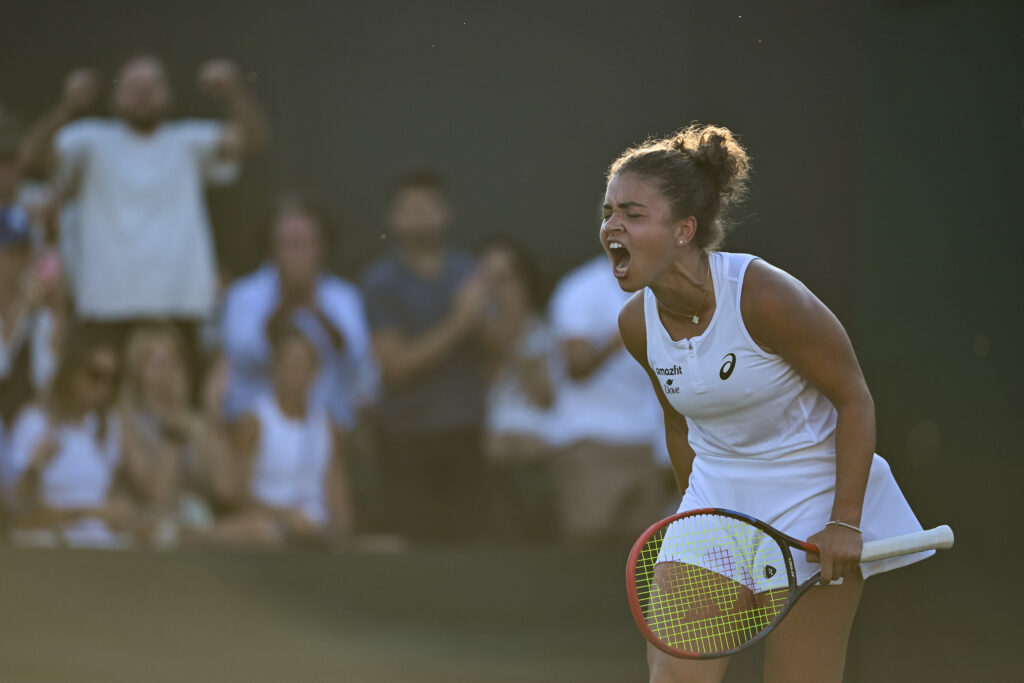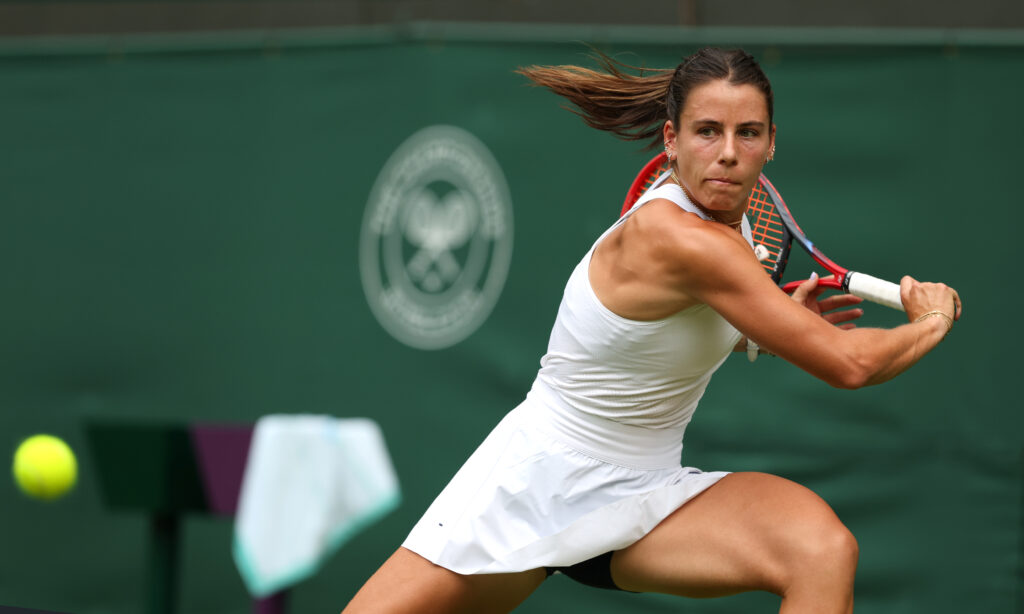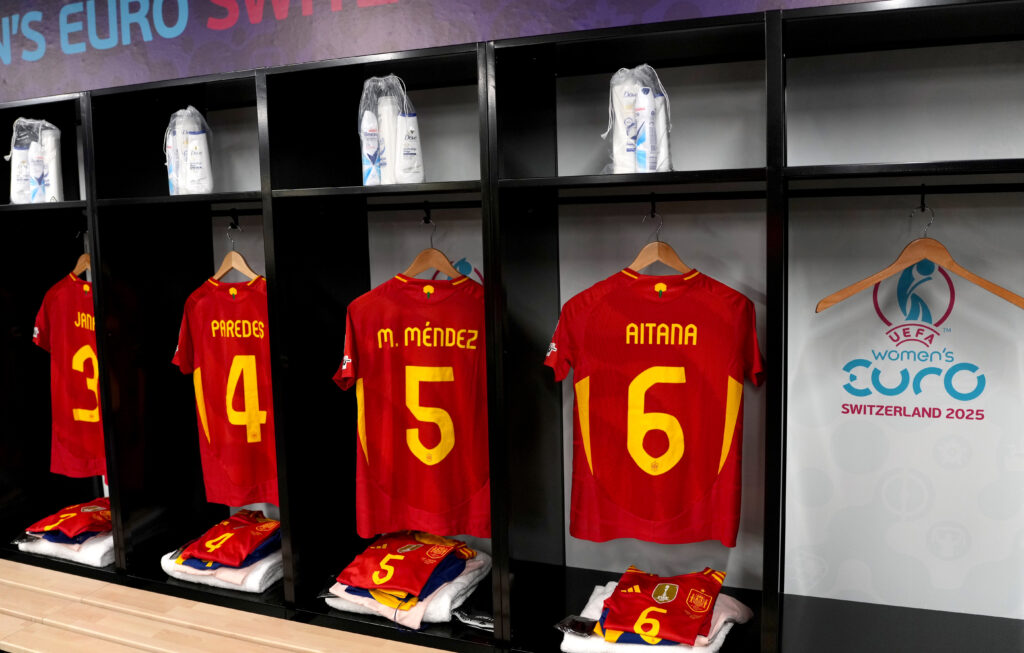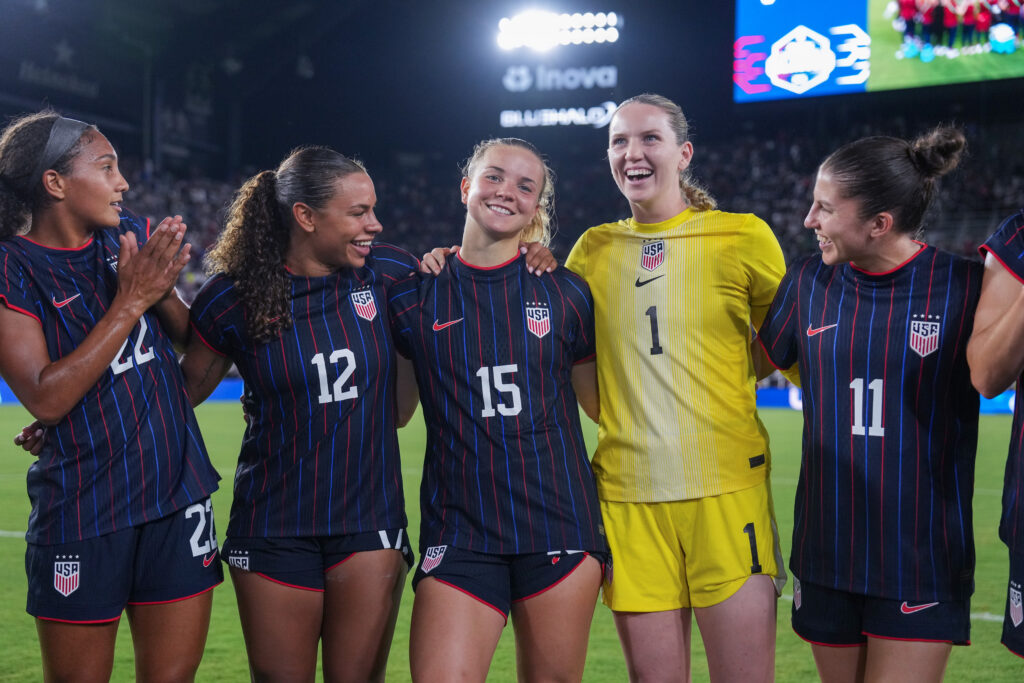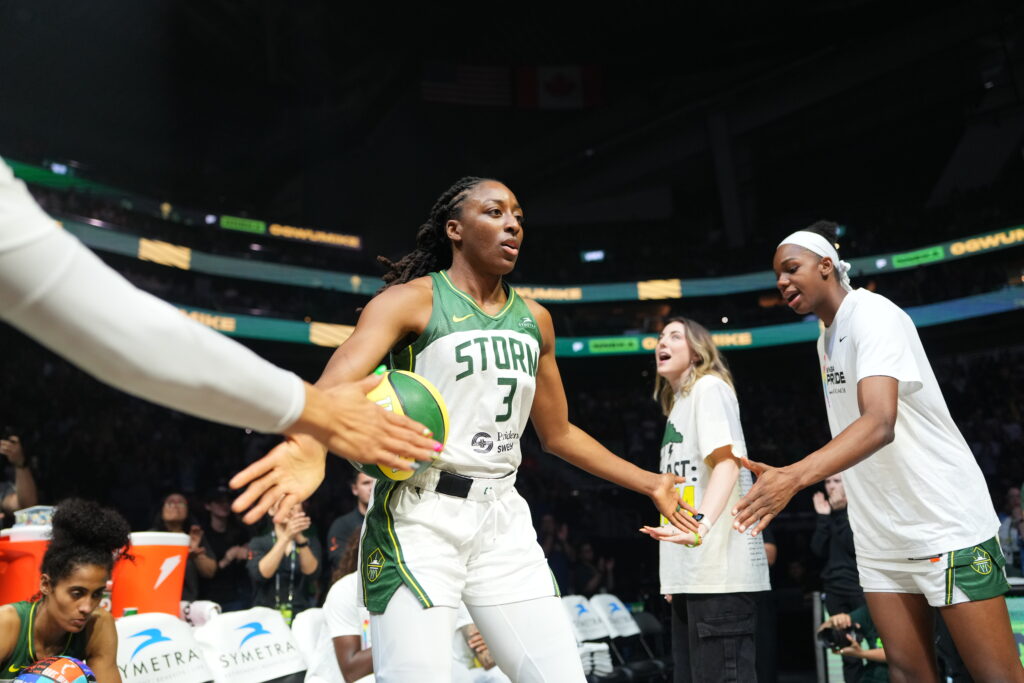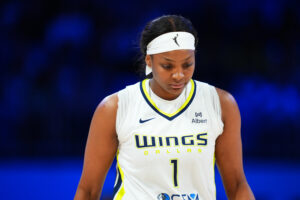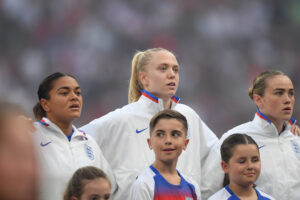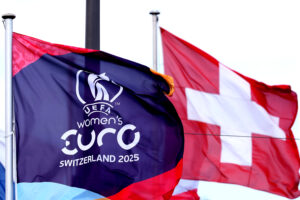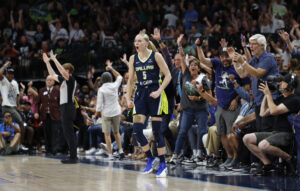In recent years, the tagline “Football is Female” has accompanied stories about women breaking barriers into men’s American football, namely the NFL. Katie Sowers, Sarah Fuller, Sarah Thomas and others have garnered national media attention for reaching unprecedented levels of success in men’s football. At SuperBowl LVI last year, the NFL made a concerted effort to demonstrate its inclusion of women when legend Billie Jean King performed the coin toss alongside players from the high school girls’ Flag League of Champions and girls youth football players from two local teams in SoCal to honor the 50th anniversary of Title IX.
What has been largely missing from efforts to showcase women and girls in football, however, are the more than 1,600 elite-level athletes in the U.S. actively playing women’s tackle football and dreaming of a women’s pro league.
Over the past several weeks, national champions have been crowned, league MVPs have been named, and the 45-player U.S. women’s national tackle football team made it to the title game of the IFAF World Championships in Finland, where they’ll look to defend their gold medal against Great Britain this Sunday.
Team USA’s starting quarterback Brittany Bushman, who has gone 29-of-48 for 338 yards through the first two games of the tournament, has experienced both the highs and the lows of her sport.
The 36-year-old from Portsmouth, N.H. grew up playing Pop Warner with the boys and then football, basketball and baseball through high school. Her playing time became more limited on the football field once she reached varsity, which she attributes to a combination of the competition outgrowing her in physical size and sensitive egos on the coaching staff. Despite the struggles, Bushman says she was “completely devastated” when her senior season ended, believing she would never have another opportunity to play her favorite sport.
It wasn’t until she was playing Division III basketball at Emmanuel College that she found out organized women’s tackle football existed. A player noticed her skill as she casually threw the football on the sidelines of her younger brother’s game and recruited her to try out.
“I said, ‘Wait what? Women’s football?’ And I was hooked,” Bushman says now.
Today in the U.S., there are two main tackle football leagues for women — the Women’s Football Alliance (WFA) and the Women’s National Football Conference (WNFC). They are the latest iterations of leagues that have been evolving since the 1960s, when the National Women’s Football League was first formed.
When WFA Commissioner Lisa King started the WFA in 2009, she modeled it after the semi-pro soccer teams she played on. After her parents denied her pleas to play PeeWee football as a kid, King resigned herself to the soccer pitch until she graduated college and eventually found out about a women’s football team based in Los Angeles. The three-hour commute twice a week didn’t stop King, and she’s been committed to growing the game for women ever since.
“The league that we were playing in was extremely expensive. There weren’t a whole lot of teams, so the travel was very expensive. It was quite a financial burden, which is why I don’t think a lot of the younger players were playing at the time,” King says. “I just kind of had a vision of duplicating what women’s soccer had done and doing it in the women’s football space.”
After 14 years as the leader of the WFA, King’s vision for the future of women’s football has greatly surpassed simply reducing costs for players.
“There’s a huge following for [women’s] UFC. Contact sports for women is not something people are shying away from,” King says. “The sky’s the limit. [Football] is America’s sport. It’s the most popular sport. I think it’s going to be bigger than all the major sports, in my opinion. I think eventually bigger than women’s basketball, eventually bigger than women’s soccer.”
Her confident assessment of her sport’s growth potential comes with important context. She’s extremely pragmatic about the time it takes to develop a thriving professional league and the specific challenges facing women’s tackle football.
“Our biggest challenge is we do not have high school. We don’t have youth, we don’t have college, so we really have to develop the sport ourselves,” King says. “It takes developing the players, developing the markets. It’s not instant. We’ve been doing this for 14 years. As we continue to grow, the level of competition gets better, the more fans we get, the more attention we get. In my opinion, that’s the key to success. It’s not something that’s going to be instant.”
Not everyone in the game shares King’s patient and pragmatic mindset. Most notably, Odessa Jenkins split from the WFA in 2018 to start the WNFC with a more aggressive financial model and timeline.
“I joined a startup in 2015 and really started to understand how businesses are built, valued, structured,” Jenkins says. “I thought if a startup tech firm could be built that way, a women’s football league could be built that way, too.”
The South Central L.A. native grew up playing a slew of sports on the blacktops of her neighborhood with large groups of kids, but football was her favorite early on.
“It was one of the few sports where I could just get out there and be fast. How small I was didn’t really matter. It was just how tough I was that mattered,” Jenkins says. “I immediately realized that there was a place for everybody in football. Our chubby cousins, our girl cousins, our boy cousins, our tall cousins, everyone had a spot. So, I loved the sport. I loved it.”
When obtaining a college scholarship became an important priority, and her middle school football coach told her how unlikely that would be in the sport of football, Jenkins begrudgingly quit to focus on academics and basketball, the sport that eventually took her through university. It wasn’t until her late twenties that Jenkins found out 11v11 women’s tackle football existed and had been around for more than half a century. Her reaction at the time was similar to Bushman’s — equal parts shock and elation.
“I felt robbed of my life. I was like, ‘What? We’ve been doing this for 60 years? Are you kidding me?’” Jenkins recalls.
Part of what propelled Jenkins to branch off from the WFA and start the WNFC was the underlying disappointment she felt in 2017. She had won the WFA Championship while coaching and playing on the Dallas Elite, and she had won a World Championship with Team USA. Having been selected for the NFL’s Bill Walsh Diversity Coaching Fellowship with the Atlanta Falcons that year, Jenkins had a front-row seat to what her counterpart on the men’s side was experiencing.
“I was supposed to be at the highest place that a woman could be in football at that time, and I’m sitting in the locker room with Devonta Freeman who was about to sign the biggest running back contract in the history of football at $48.9 million. I’m the best running back in [women’s] football at the time. I was at my championship game a week before he signed that contract, and I couldn’t even get a hoodie for free,” Jenkins says.
So, she set about carving a faster path toward a legitimate professional league for women. She developed a five-year business plan for her new league and approached 25 teams with her proposal. Twenty of the teams were impressed enough to follow her lead, including a few from the WFA, and the first season of the WNFC kicked off in 2019.
The timing worked well for Bushman, Jenkins’ friend and former teammate, who had just returned to the sport after a five-year hiatus following an ACL tear that she didn’t have insurance to fix.
Soon after she was named the 2012 WFA MVP after a stellar season with the Dallas Diamonds and selected to Team USA’s roster for the 2013 World Championships, Bushman suffered the injury. Arguably the best player in the game that year couldn’t afford the medical treatment necessary to get her back on the field.
After finally obtaining the surgery, Bushman focused the next few years on establishing herself in her career as a full-time high school science teacher and coach, which came with insurance and economic stability. In 2018, she was ready to return to the game.
Her full-circle moment came earlier this summer when the Texas Elite Spartans star quarterback stepped onto the Dallas Cowboys’ practice field at the Ford Center at The Star to play for the 2022 WNFC Championship after being named league MVP earlier that day. As a kid who grew up cheering for the Cowboys, Bushman still fondly recalls that day.
“I had to say to myself in my head, ‘Do not get emotional right now,’ because I could feel the tears,” Bushman says. “We used to play on dirt patches. We came out in mismatched uniforms and helmets when I first started. And then to walk into that? It was a really emotional moment.”
She’s not the only one who is pleased with the progress of the WNFC.
“We’re technically in year three of football, four of existence, and we’ve hit every single milestone that we said we would hit,” Jenkins says.
With sponsorships from adidas, Riddell and Dick’s Sporting Goods, a streaming deal with Vyre, and a fast-growing following on social media, the WNFC is planning to launch its first round of seed funding later this year. Jenkins plans to be very selective with the teams they bring in to maximize revenue potential and the quality of the product on the field. She’s also passionate about leaning into the identities of WNFC athletes and not repeating the mistakes she watched WNBA marketers make early on, when many of them ostracized the bulk of their players and fans.
“We are also a league that embraces who our players are. Sixty-five percent of them are BIPOC, and a great majority of them identify as LGBTQ+. We don’t run away from that,” she says. “If your walk-in is with a suit, walk in with a suit. If your walk-in is in a dress, walk in in a dress. If your pronouns are them and they, we’ll use them.”
“A smaller league with more impact,” is how Jenkins describes the WNFC’s 17-team league in comparison to the WFA, which has 61 teams playing across four divisions.
From the WFA’s perspective, the multi-division model allows them to do it all: develop the game from the grassroots level and also market and showcase the elite level to bring in revenue. And they’ve got a track record to support their case. WFA sponsors include Wilson, Zenith, Secret and the NFL Academy, among others. This year, they signed deals with the new Women’s Sports Network and with Fat Head, which allows WFA players to earn income off their name, image and likeness.
In early July, the WFA Pro Championship game between the Boston Renegades and Minnesota Vixen aired on ESPN2 (after 10 years of streaming on ESPN3). It garnered higher viewership than the lead-in international soccer match and topped the channel’s Sunday afternoon average viewership in July for three of the past four years. Those numbers lead King to believe that their patience and hard work is starting to pay off.
“Now that we’re getting some funding and we’re getting that platform, to me, it’s almost like downhill now. I feel like we’ve climbed, climbed, climbed, and now we’re kind of at that peak,” King says. “Whereas five years ago, I would reach out to some companies and I wouldn’t get anything returned, or maybe I’d get a form email returned. Now we’re getting meetings within a week or so. There’s so much interest in the movement with women’s sports. It can’t be any better timing than right now.”
Cynthia “Red” Bryant played in that title game as a defensive lineman for the Minnesota Vixen. Though she and her team lost the final to the Renegades, 32-12, for the second year in row, she’s still proud of what they accomplished.
One of the original players from the inaugural 1999 season that restarted organized women’s tackle football in the U.S. after the NWFL folded in the late 80s, Bryant has been playing the sport in Minnesota for 24 seasons. A star basketball player growing up, Bryant took an unexpected detour when she became pregnant with her son at 19. When the WNBA launched and she had no DI pathway to garner a tryout, she had no reason not to accept the invite she did get to try out for the original Vixen football team in 1999. Once she experienced the gridiron, she fell in love with a completely new athletic challenge. Whereas basketball always felt easy, football made her work and grind and break through mental barriers she’d never had to before.
By the time her granddaughter was born many seasons into her career, Bryant realized basketball had never been her destiny.
“It was meant for me to be a pioneer and leave a legacy behind in football and do something bigger for girls,” she says.
“If it’s something that you love to do, that should be enough for you. That’s what carries me. That’s what I think carries the majority of these women playing — it’s the joy of it. To get sponsorships? To get people to buy into it? Of course, that would be great, but we haven’t grinded this long just for that. We grinded this long because our hearts are in it, and we love to play the sport.”
While Bryant plans to give it one more run before retiring next year, neither the WFA nor WNFC has plans to stop storming toward their goal of becoming thriving pro football leagues. As anyone who follows women’s pro sports knows, football is hardly the first sport to have dueling leagues.
“If somebody thinks they can do it differently, I wish them success. If they have found something that’s working, then that’s going to be best for women’s football, then good for them and good for women’s football,” King says about the WNFC. “We’re gonna keep doing what we’re doing, and it does take a lot of time. I think people think that there’s gonna be instant stardom, instant money, instant revenue. If only we just did this, if only we just did that. And at the end of the day, it really takes growth.”
Neither league leader is overly concerned or distracted by the philosophical differences or existence of the opposing league.
“I think that it is clear whether the WFA exists or not, the WNFC is going to reach its goals. There is no doubt about it,” Jenkins says.
“The only thing I have to say about that is that they’re both amazing leagues and they’ve got two amazing people running them,” Bryant says. “I just hope that we can find a way to convert both of them together and try to get one good product to push for.”
This week, top players from both leagues are competing side by side at the World Championships as teammates on the national team under head coach Callie Brownson, the chief of staff and assistant wide receivers coach for the Cleveland Browns.
With Bushman leading the offense as QB1 and star running back D’Ajah Scott putting up 141 rushing yards and four touchdowns through the first two rounds, the Americans are highly favored to defeat Great Britain for the gold medal.
The veteran Bushman, keenly aware of the “young bucks” rising in the game, is enjoying every minute of her resurgence and success on the field. As girls’ flag football becomes an even more popular sport throughout the country, the average age of players in both leagues is going down, while years of prior experience in the game is going up. The National Association of Intercollegiate Athletics (NAIA) even added women’s flag football as a competitive collegiate sport for its member institutions last year.
Looking back on her Texas Elite Spartans’ championship-winning weekend in Dallas at the end of June, Bushman recalls one of her favorite memories — aside from her first step onto the field years ago. The Girls Ball event brought together youth football and current WNFC players for a night of celebrating girls who love football.
“I know so many times when I was that age, I felt so alone. I’d be the only one going to my locker room,” Bushman says. “If I knew that there was a whole league of women who are playing this game at a high level, I just can’t even imagine what that support would feel like.”
Tessa Nichols is a contributing writer at Just Women’s Sports.

